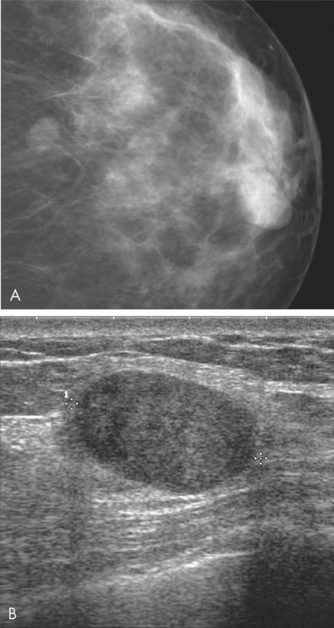chapter 51 Breast disease
BREAST HEALTH
Women of all ages should know the normal look and feel of their breasts—this is known as ‘breast awareness’. There is no evidence to support any specific technique for breast self-examination. For many women there is also a psychological barrier to conducting a technical systematic examination, often suggesting they are not confident in their technique. For these reasons women should be encouraged to get to know what is normal for them through normal activities such as showering, dressing, putting on body lotion, looking in the mirror. Most importantly, women should be encouraged to present early to their GP if they find a change in their breasts—they are not wasting their doctor’s time. This is important even if they have had a recent ‘normal’ mammogram.
Women who have a significant family history should be referred to a familial cancer or genetics clinic, where an individual surveillance program and management advice can be provided and, if appropriate, genetic testing can be conducted.1
BENIGN BREAST DISEASES
BREAST PAIN AND FOCAL BREAST NODULARITY
Breast pain
Management
Evening primrose oil (gamma-linolenic acid) has been shown to reduce pain, nodularity and tenderness, at a dose of 3 g daily.2 It has only minor side effects, including headache, nausea, gastrointestinal upset and possible drug interactions with anticoagulant and antiplatelet agents and phenothiazines. A trial of treatment should last 4 months and be monitored with a pain chart. It does not interact with oral contraceptives.
Several clinical studies in women have suggested that chasteberry (Vitex agnus castus) is efficacious in reducing symptoms associated with premenstrual symptoms (PMS) including mastalgia.2,3 This herb contains steroidal precursors and active moieties including progesterone, testosterone and androstenedione. Chasteberry may interact with oral contraceptives, other hormonal therapy and dopazmine antagonists such as haloperidol and prochlorperazine. Adverse effects reported include nausea, rash, headache and agitation.
Benign breast lumps
Fibroadenomata
Once the diagnosis is confirmed, fibroadenomata may be managed by either surgical excision or regular clinical and imaging review over 12–18 months until the lesion is proved to be stable. Should the lesion significantly increase in size or develop atypical features on imaging, it should undergo excision biopsy. New palpable fibroadenomas in women aged over 40 years should be referred to a breast surgeon for consideration of excision biopsy, because the likelihood of a new lump being cancer increases with age.4
BREAST CANCER
BACKGROUND AND PREVALENCE
Breast cancer is the most common invasive cancer diagnosed in women in developed countries and the greatest cause of cancer-related death in women.1,5 There is very good evidence that survival is related to the size and stage of the disease at diagnosis: the earlier the cancer is diagnosed, the greater the chance of effective treatment.1,5
AETIOLOGY
Despite much research into causes and risk factors for breast cancer, we have no means of preventing this disease.6 There are a number of factors that bear on the probability of a particular symptom being due to a breast cancer.








